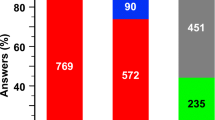Abstract
In Switzerland, children are prescribed 7.5–12.5 μg per day of vitamin D3 dissolved in alcohol, but many families do not adhere to the recommendation. The aim of the trial was to compare the acceptance of vitamin D3 dissolved in alcohol or in medium-chain triglycerides among mothers of Swiss newborn infants. The acceptance was tested in 42 healthy newborn infants (20 girls and 22 boys) aged between 2 and 7 days. Their neonatal body weight ranged between 2.225 and 4.150 kg, and the gestational age between 36 1/7 and 41 3/7 weeks. The blinded mothers rated the facial reaction of their children by pointing on a facial hedonic scale. Thirty eight of the 41 mothers, who brought the comparison to completion, assigned a better score to the oily preparation with no difference in the remaining three cases (P < 0.0001). The acceptance for the oily preparation was significantly better both among mothers whose babies were initially presented the alcoholic preparation and among mothers whose babies were initially presented the oily preparation. Furthermore, the acceptance for the oily preparation was better irrespective of gender of the infant or parity of the mother. In conclusion, from the perspective of mothers, Swiss newborn infants prefer the taste of the oily vitamin D3 preparation over the alcoholic preparation.

Similar content being viewed by others
Notes
Multiply the number of micrograms by 40 to convert micrograms to international units.
References
Baeke F, Gysemans C, Korf H, Mathieu C (2010) Vitamin D insufficiency: implications for the immune system. Pediatr Nephrol 25:1597–1606
Ballard JL, Khoury JC, Wedig K, Wang L, Eilers-Walsman BL, Lipp R (1991) New Ballard Score, expanded to include extremely premature infants. J Pediatr 119:417–423
Bartoli F, Martínez JM, Ferrarini A, Recaldini E, Bianchetti MG (2006) Poor adherence to the prophylactic use of vitamin D3 in Switzerland. J Pediatr Endocrinol Metab 19:281–282
Birch LL (1999) Development of food preferences. Annu Rev Nutr 19:41–62
Chen AW, Resurrecion AVA, Paguio LP (1996) Age appropriate hedonic scales to measure food preferences of young children. J Sens Stud 11:141–163
Davies EH, Tuleu C (2008) Medicines for children: a matter of taste. J Pediatr 153:599–604
Dratva J, Merten S, Ackermann-Liebrich U (2006) Vitamin D supplementation in Swiss infants. Swiss Med Wkly 136:473–481
Holick MF (2008) The vitamin D deficiency pandemic and consequences for nonskeletal health: mechanisms of action. Mol Aspects Med 29:361–368
Martínez JM, Bartoli F, Recaldini E, Lavanchy L, Bianchetti MG (2006) A taste comparison of two different liquid colecalciferol (vitamin D3) preparations in healthy newborns and infants. Clin Drug Investig 26:663–665
McLean S, Sheikh A (2010) Does avoidance of peanuts in early life reduce the risk of peanut allergy? BMJ 340:593–594
Paunier L (1991) Prevention of rickets. Nestlé Nutr Workshop Ser Pediatr Program 21:263–272
Peyram DR, Pilgrim FJ (1957) Hedonic scales method of measuring food preferences. Food Technol 11:9–14
Pronzini F, Bartoli F, Vanoni F, Corigliano T, Ragazzi M, Balice P, Bianchetti MG (2008) Palatability of vitamin D3 preparations modulates adherence to the supplementation in infancy. Clin Pediatr Endocrinol 17:57–60
Rajakumar K, Thomas SB (2005) Reemerging nutritional rickets: a historical perspective. Arch Pediatr Adolesc Med 159:335–341
Rauber-Luthy C, Reichert C, Kupferschmidt H (2010) Vitamin-D3-Überdosierungen bei Kleinkindern. Schweiz Ärzteztg 91:1178–1179
Rosen CJ (2011) Clinical practice. Vitamin D insufficiency. N Engl J Med 364:248–254
Slater R, Cornelissen L, Fabrizi L, Patten D, Yoxen J, Worley A, Boyd S, Meek J, Fitzgerald M (2010) Oral sucrose as an analgesic drug for procedural pain in newborn infants: a randomised controlled trial. Lancet 376:1225–1232
Wagner CL, Greer FR, Academy A, American Academy of Pediatrics, Section on Breastfeeding and Committee on Nutrition (2008) Prevention of rickets and vitamin D deficiency in infants, children, and adolescents. Pediatrics 122:1142–1152
Financial disclosure
No financial support was provided to the study.
Author information
Authors and Affiliations
Corresponding author
Rights and permissions
About this article
Cite this article
Lava, S.A.G., Caccia, G., Osmetti-Gianini, S. et al. Acceptance of two liquid vitamin D3 formulations among mothers with newborn infants: a randomized, single-blind trial. Eur J Pediatr 170, 1559–1562 (2011). https://doi.org/10.1007/s00431-011-1477-7
Received:
Revised:
Accepted:
Published:
Issue Date:
DOI: https://doi.org/10.1007/s00431-011-1477-7




